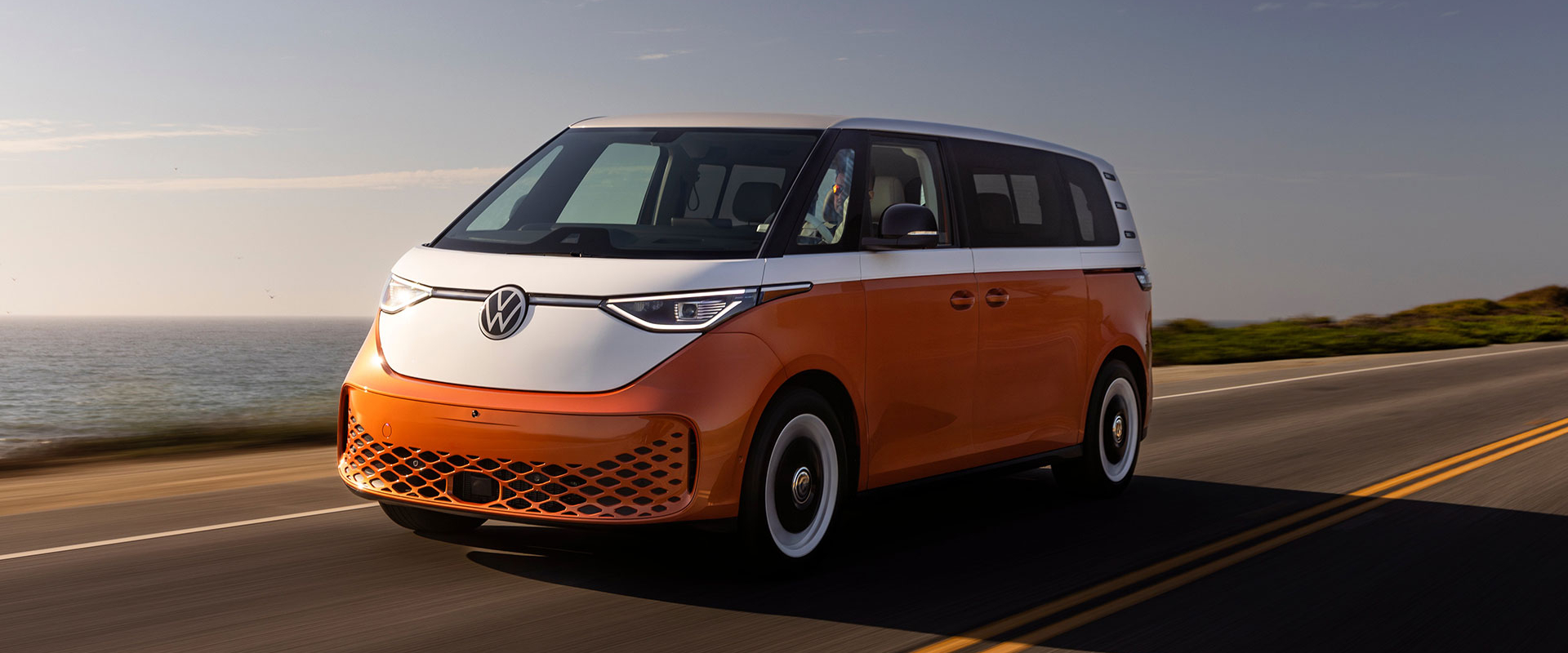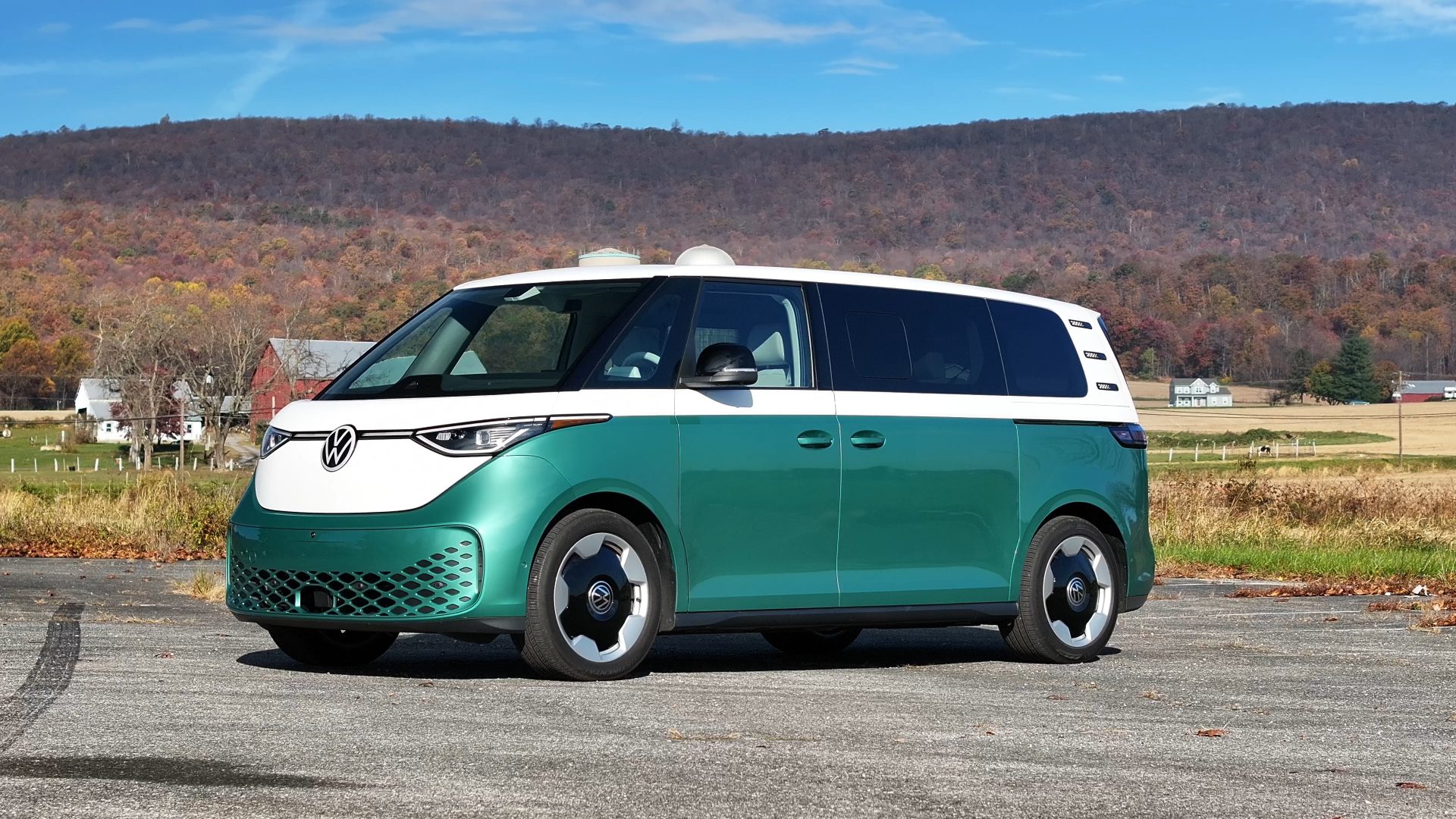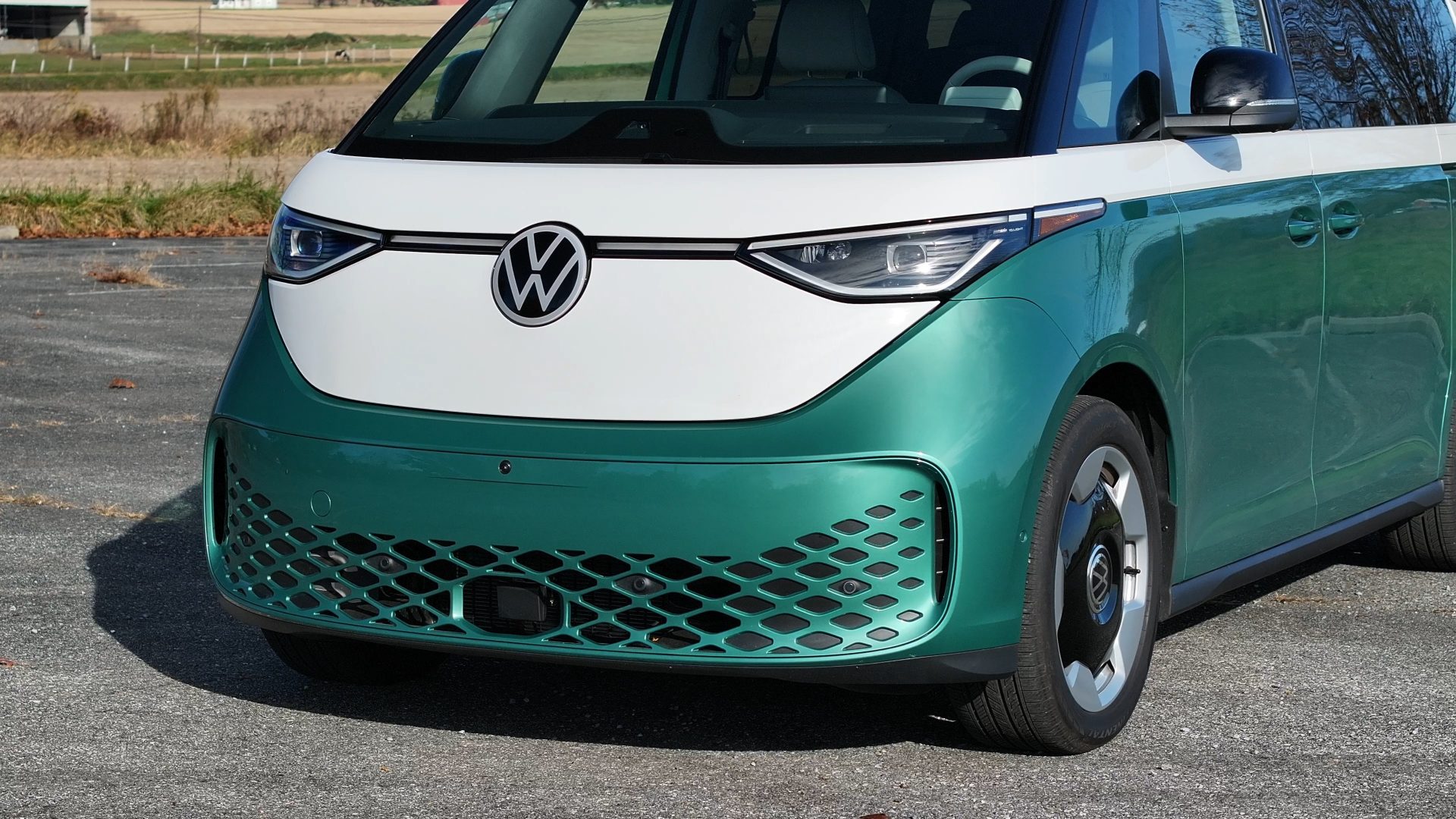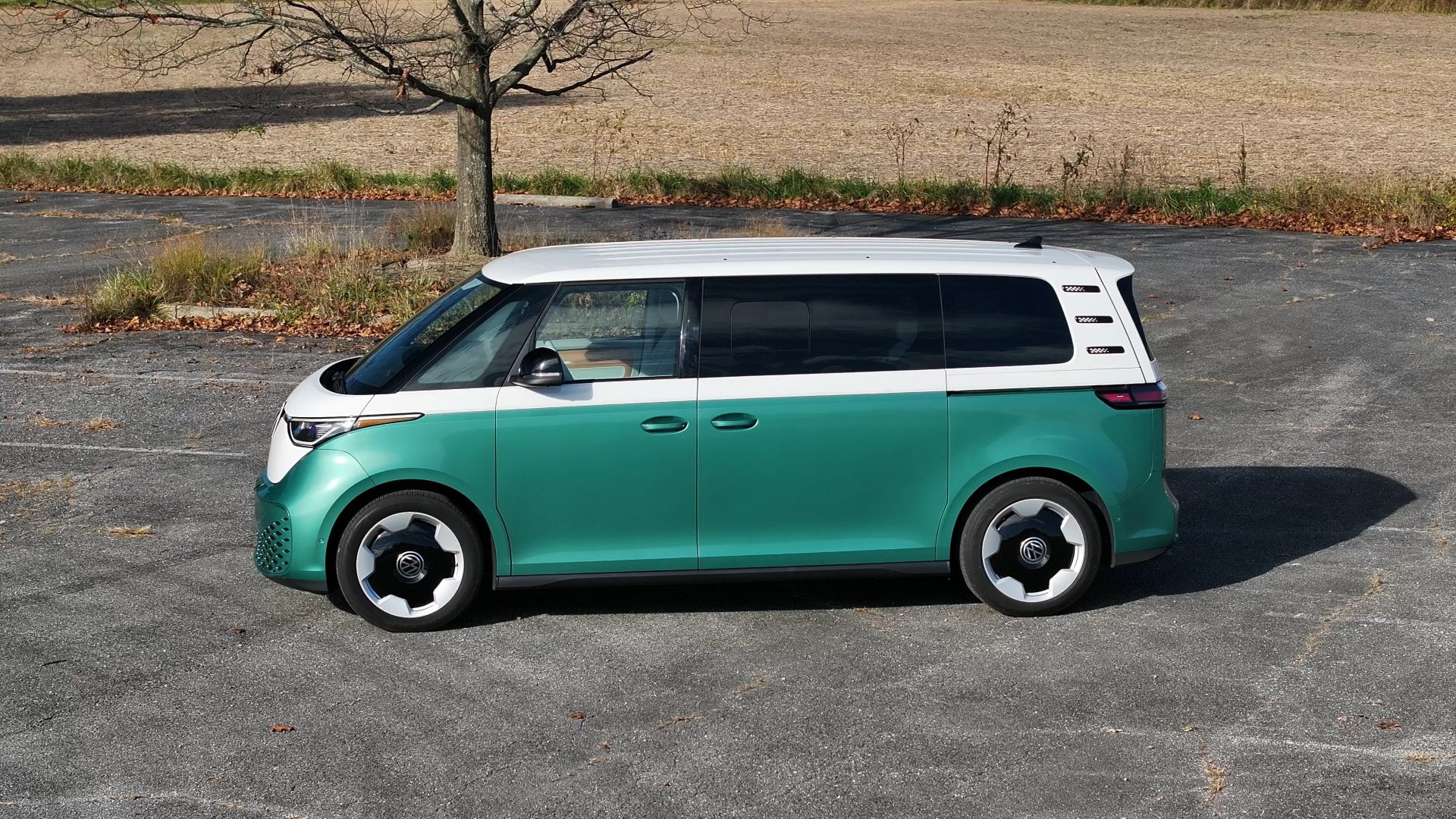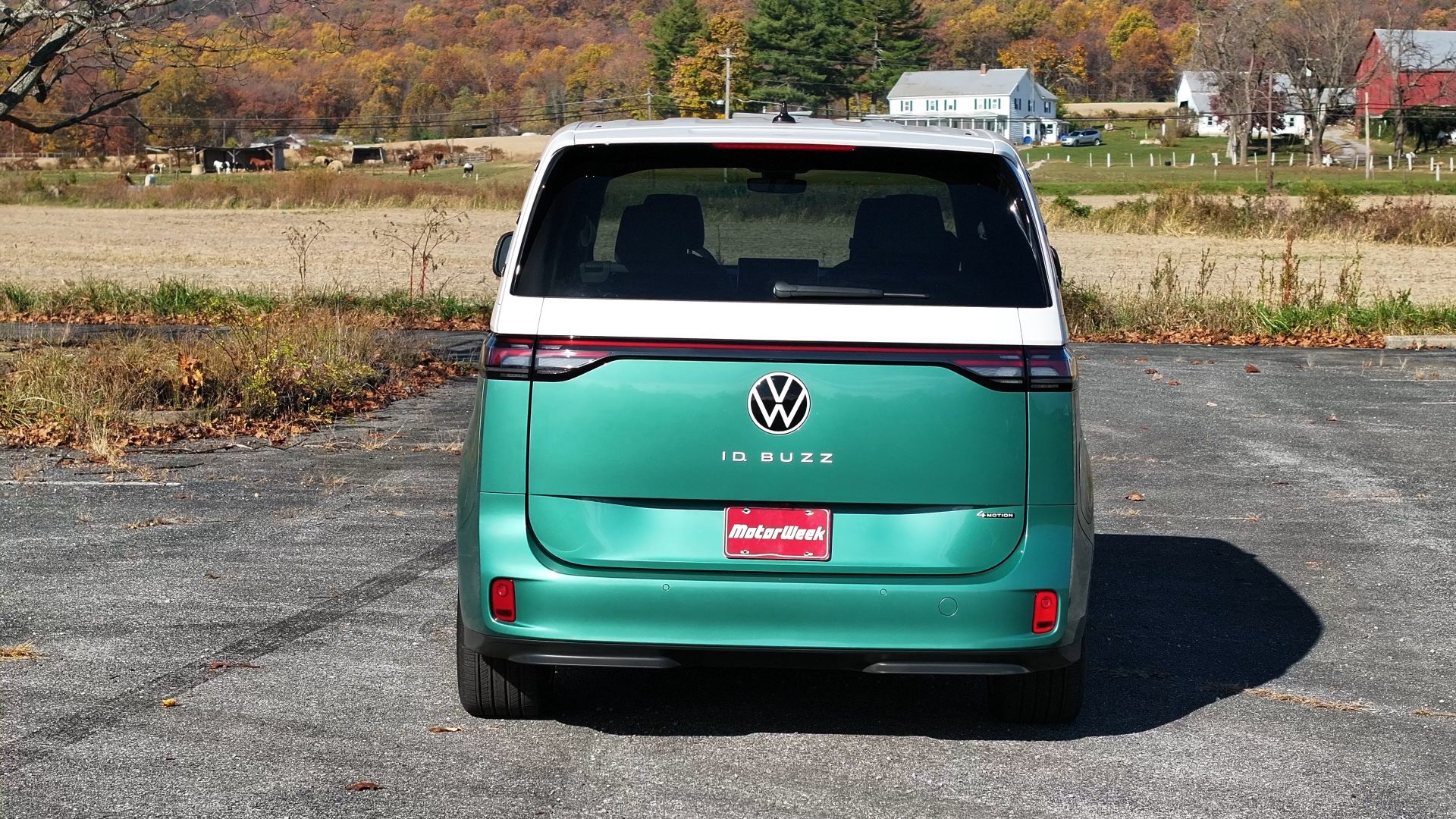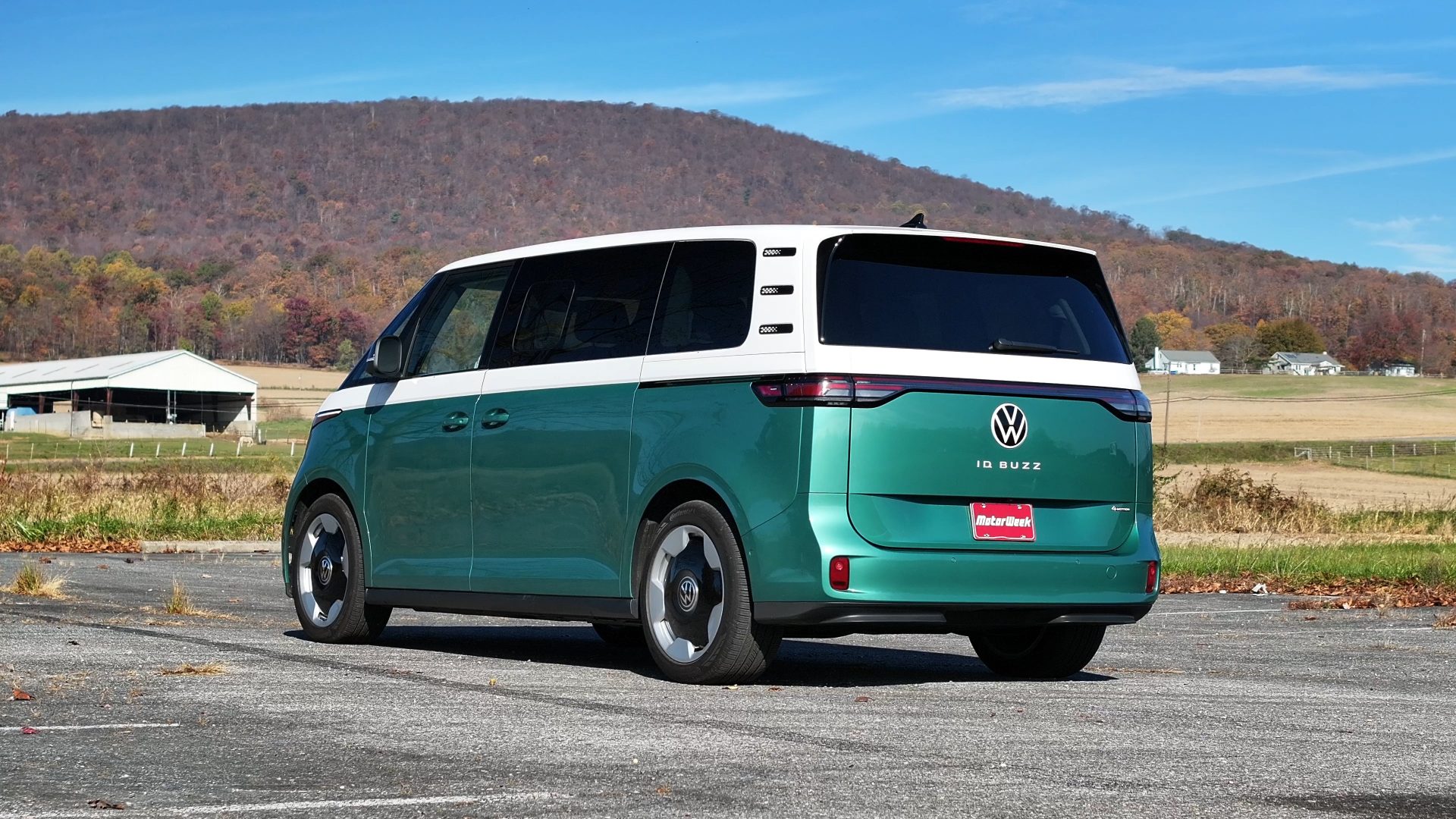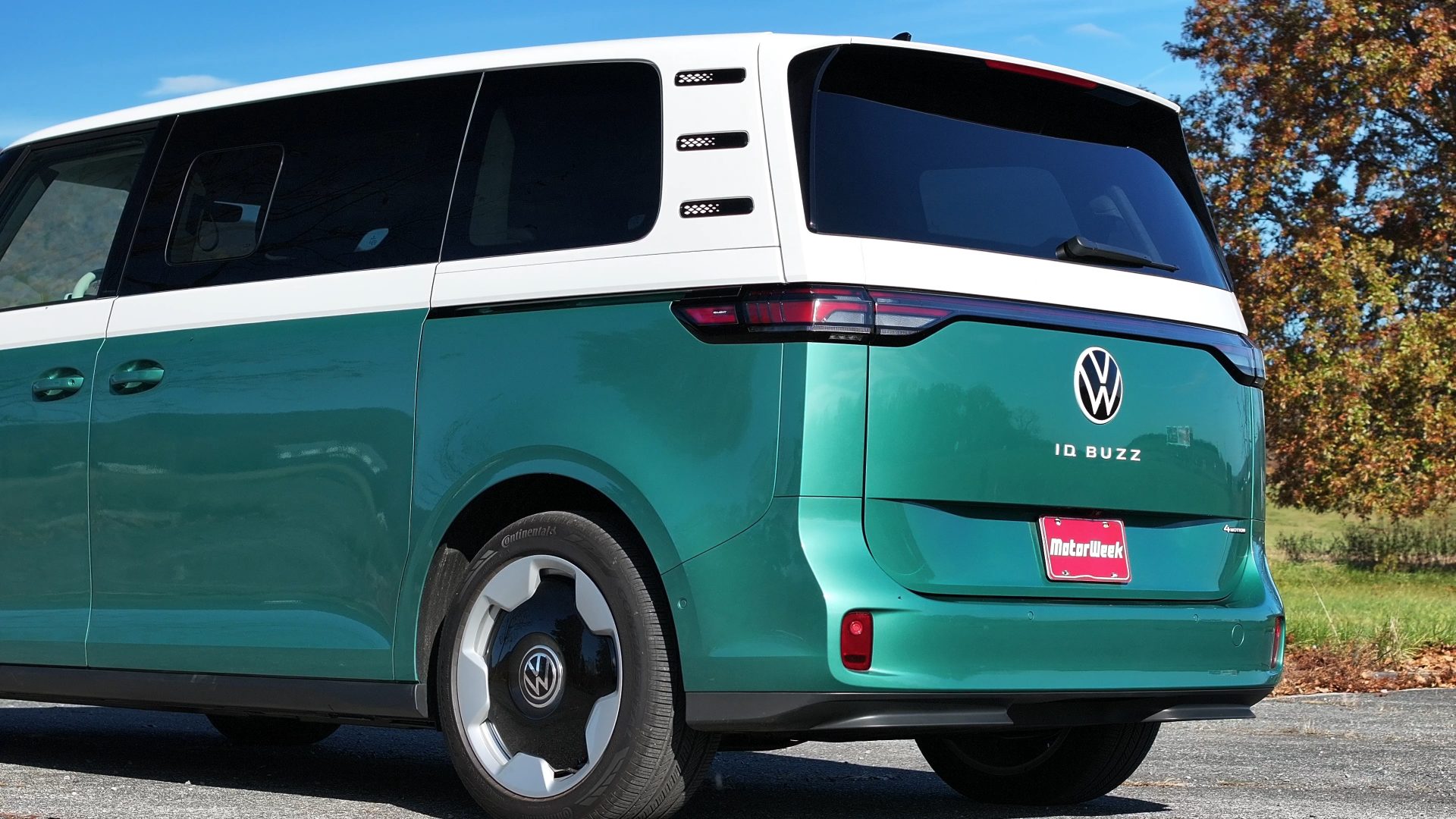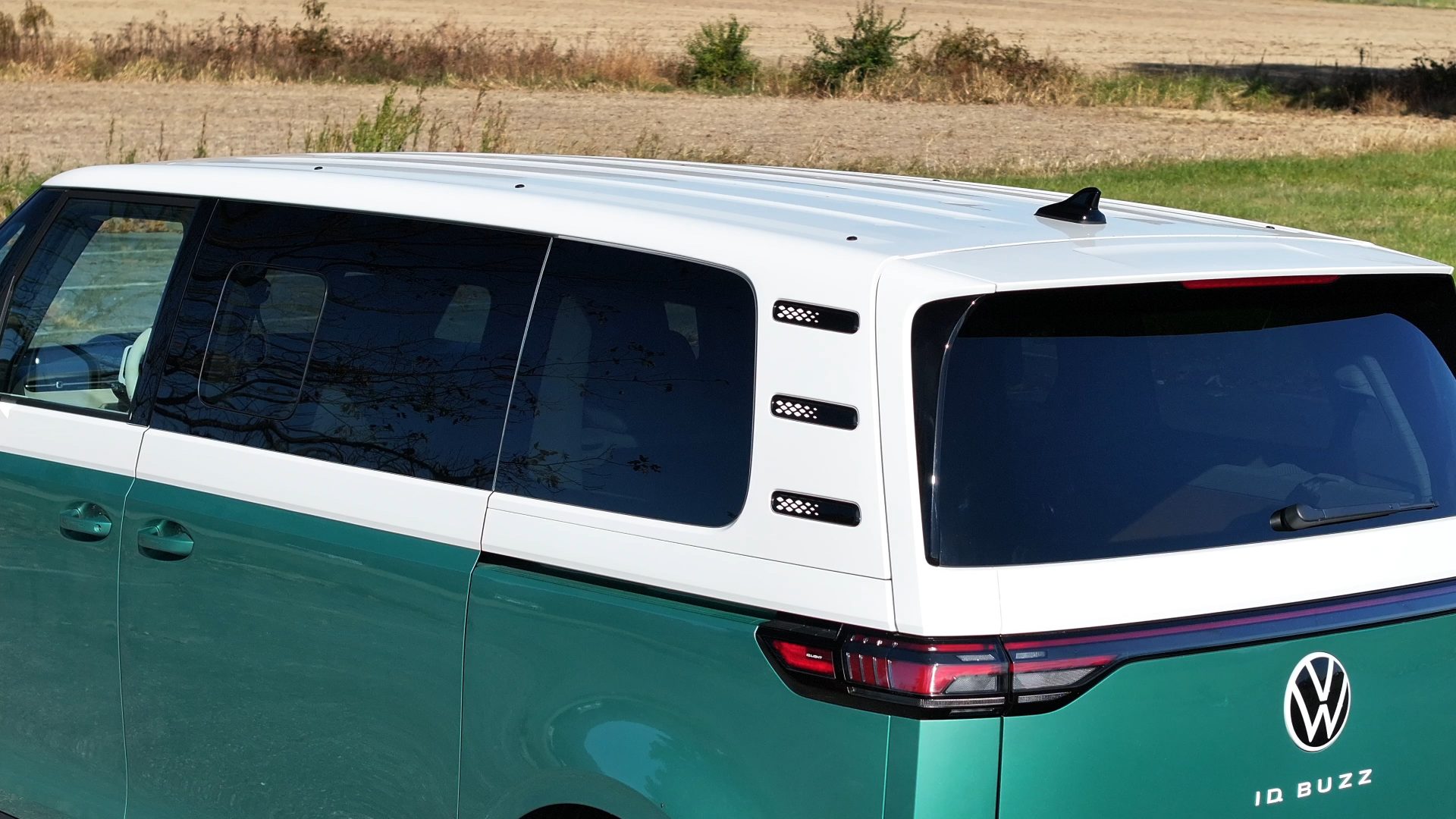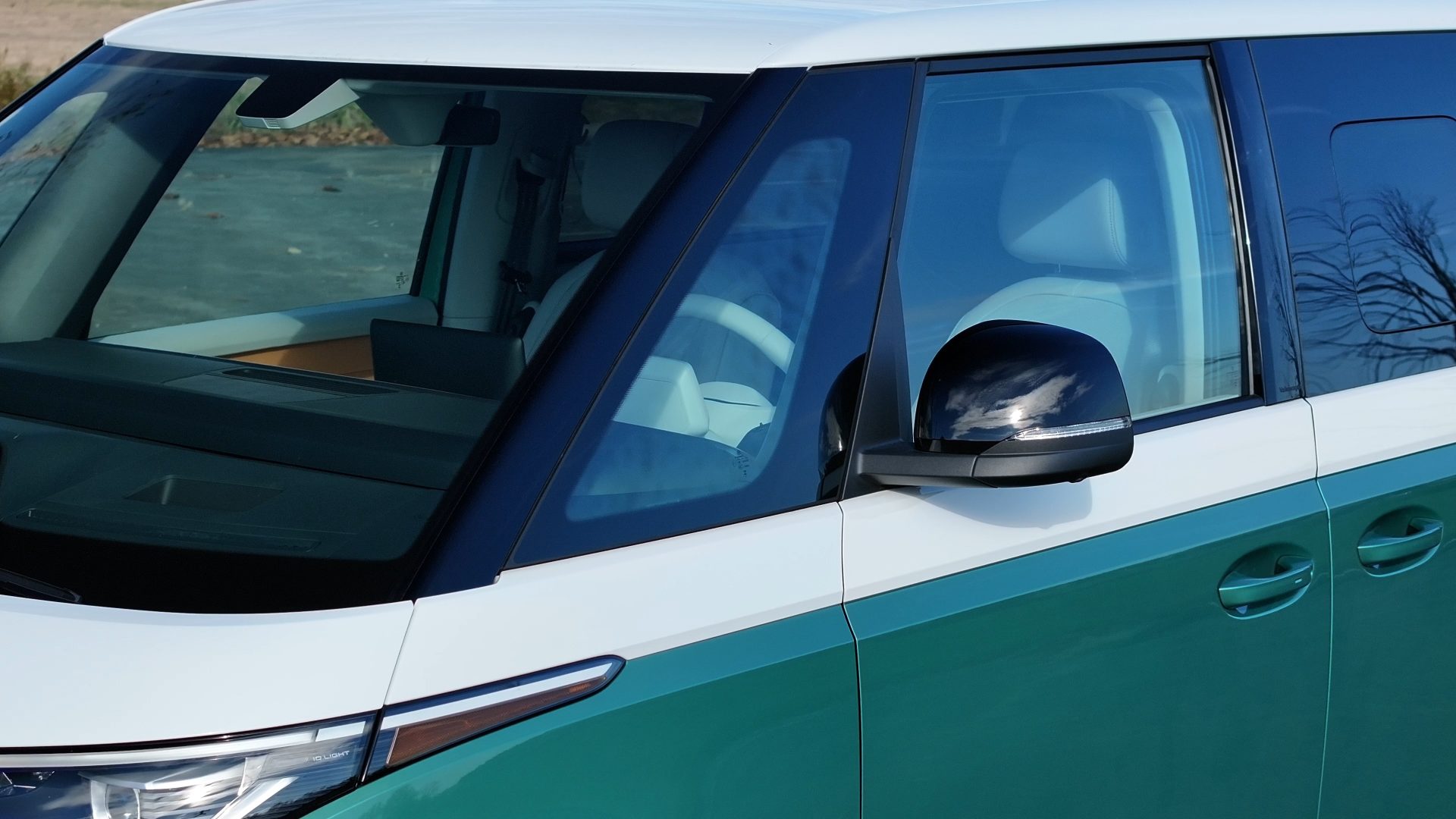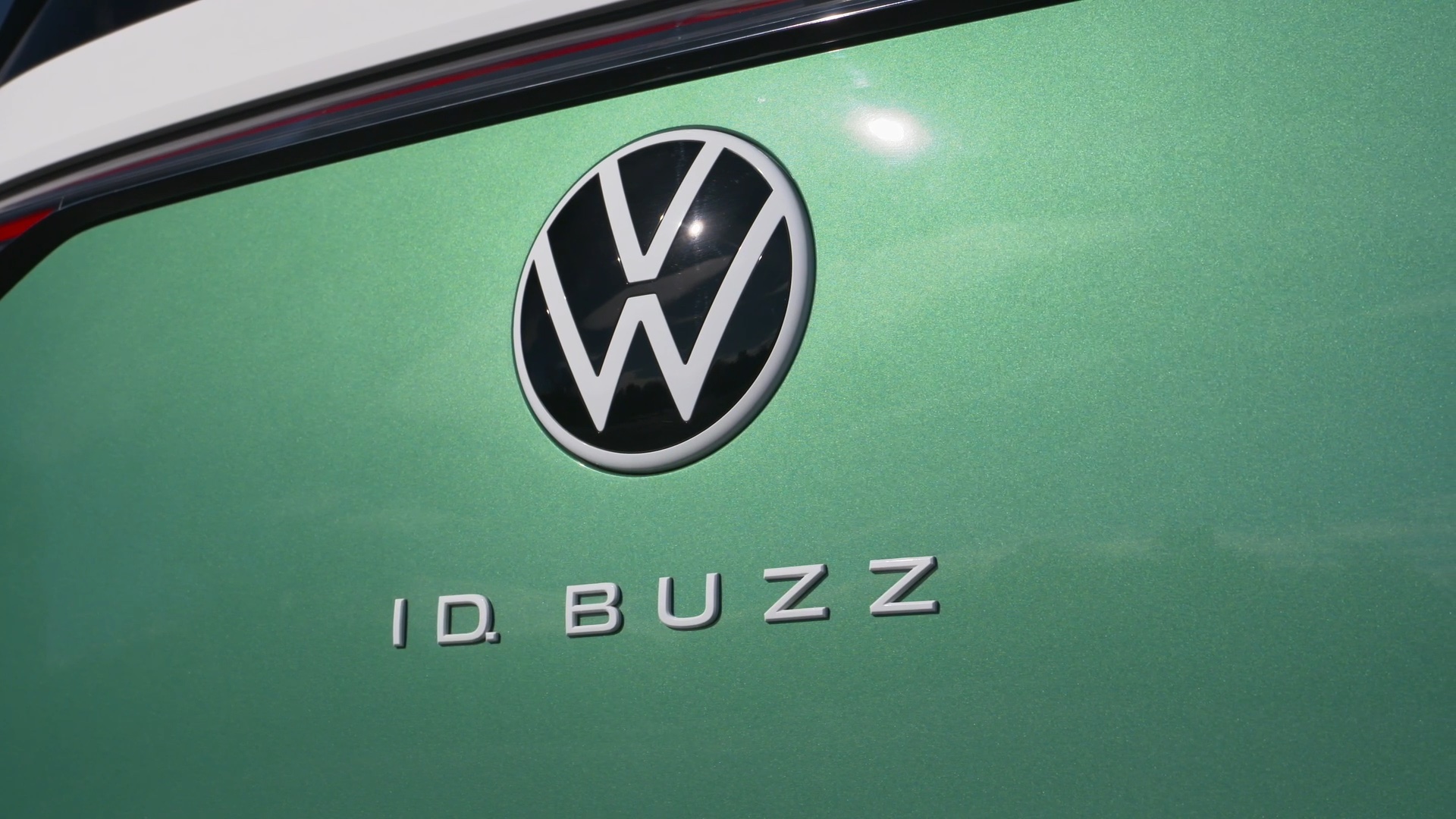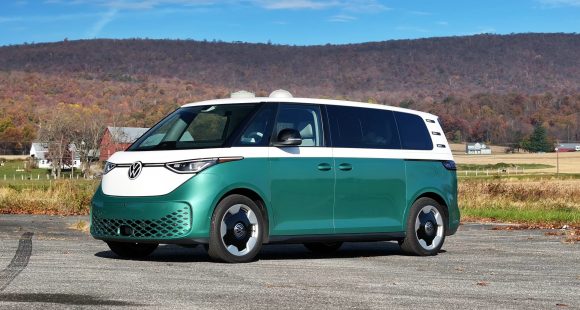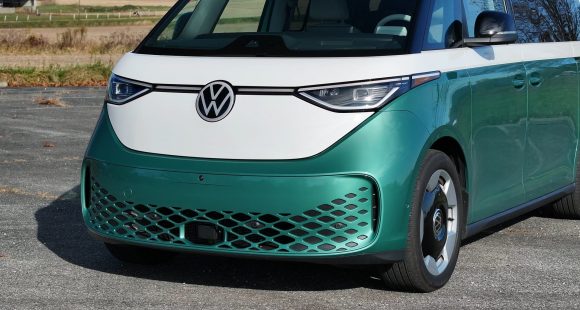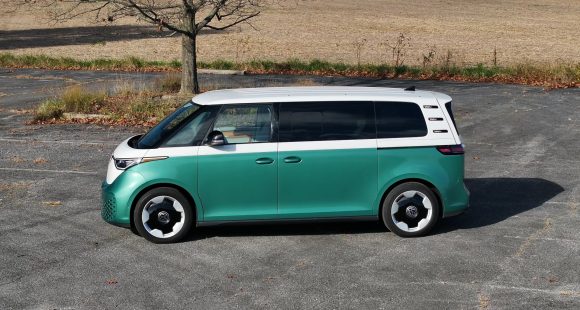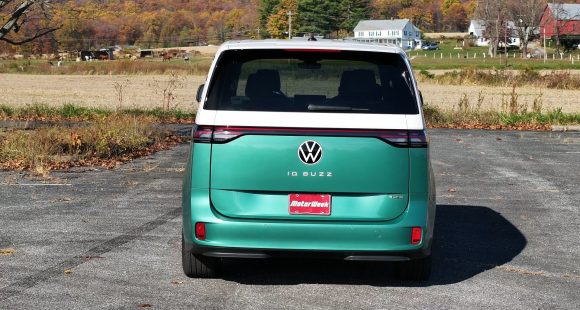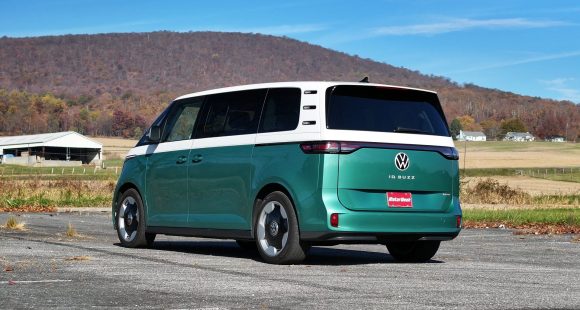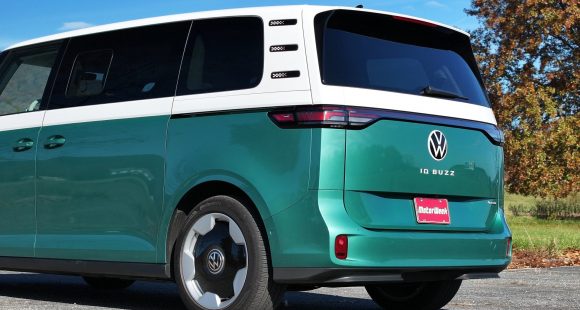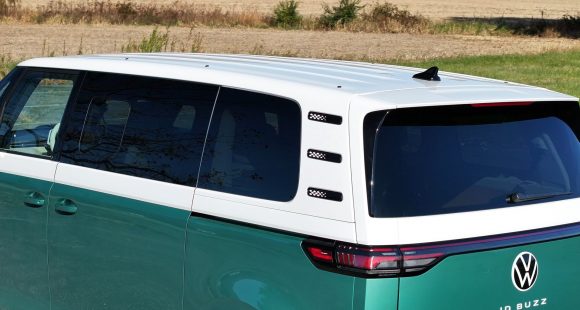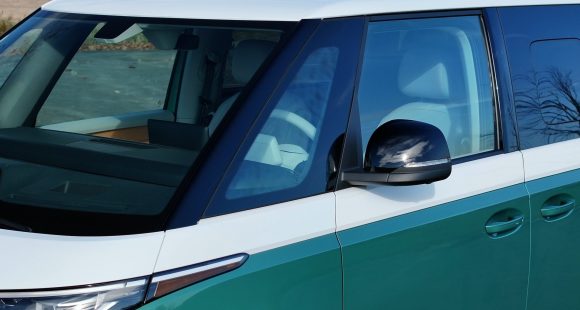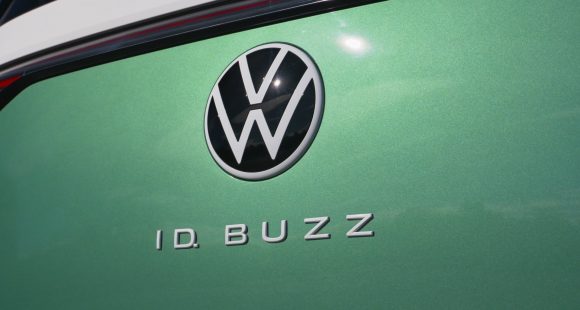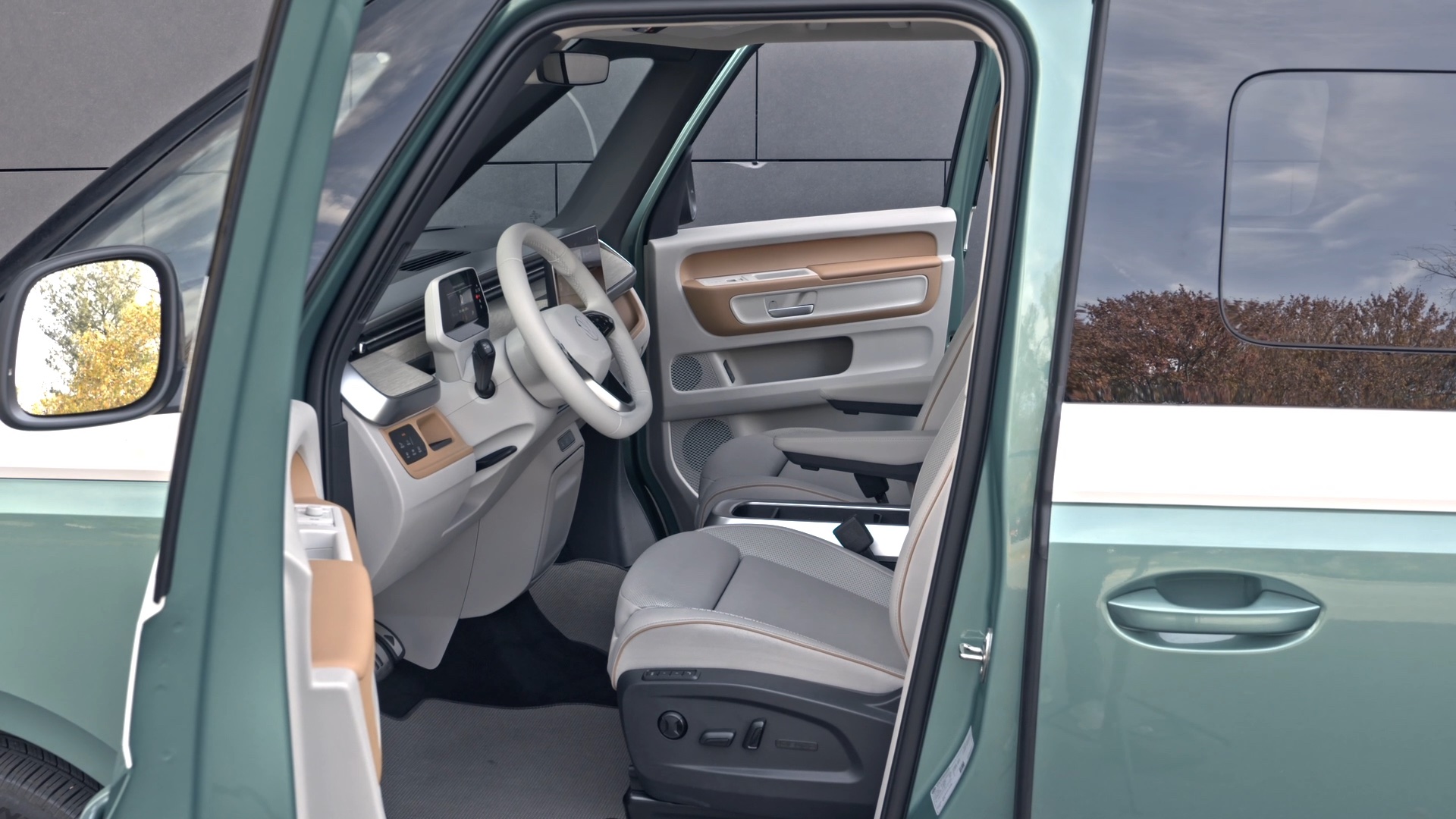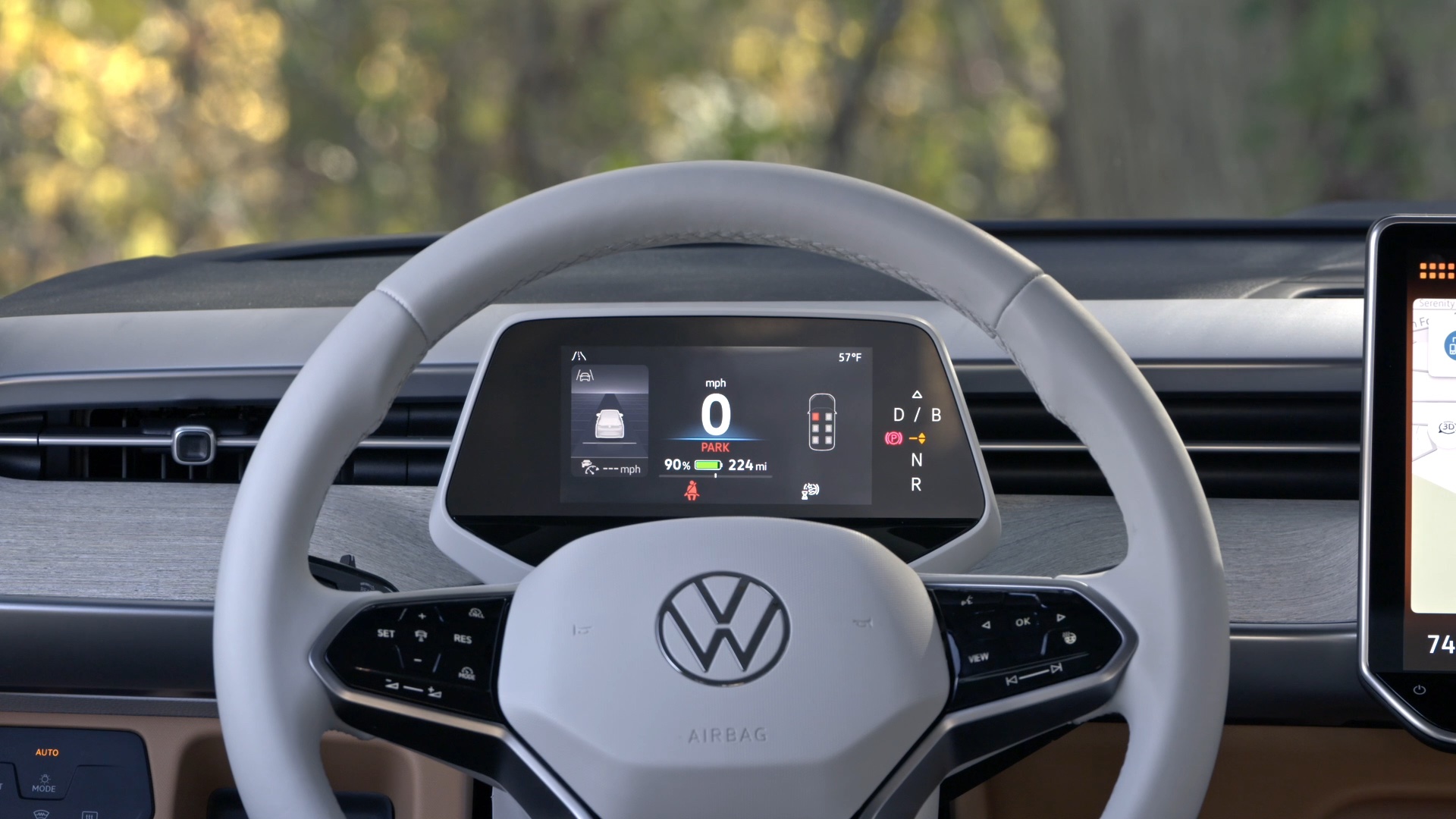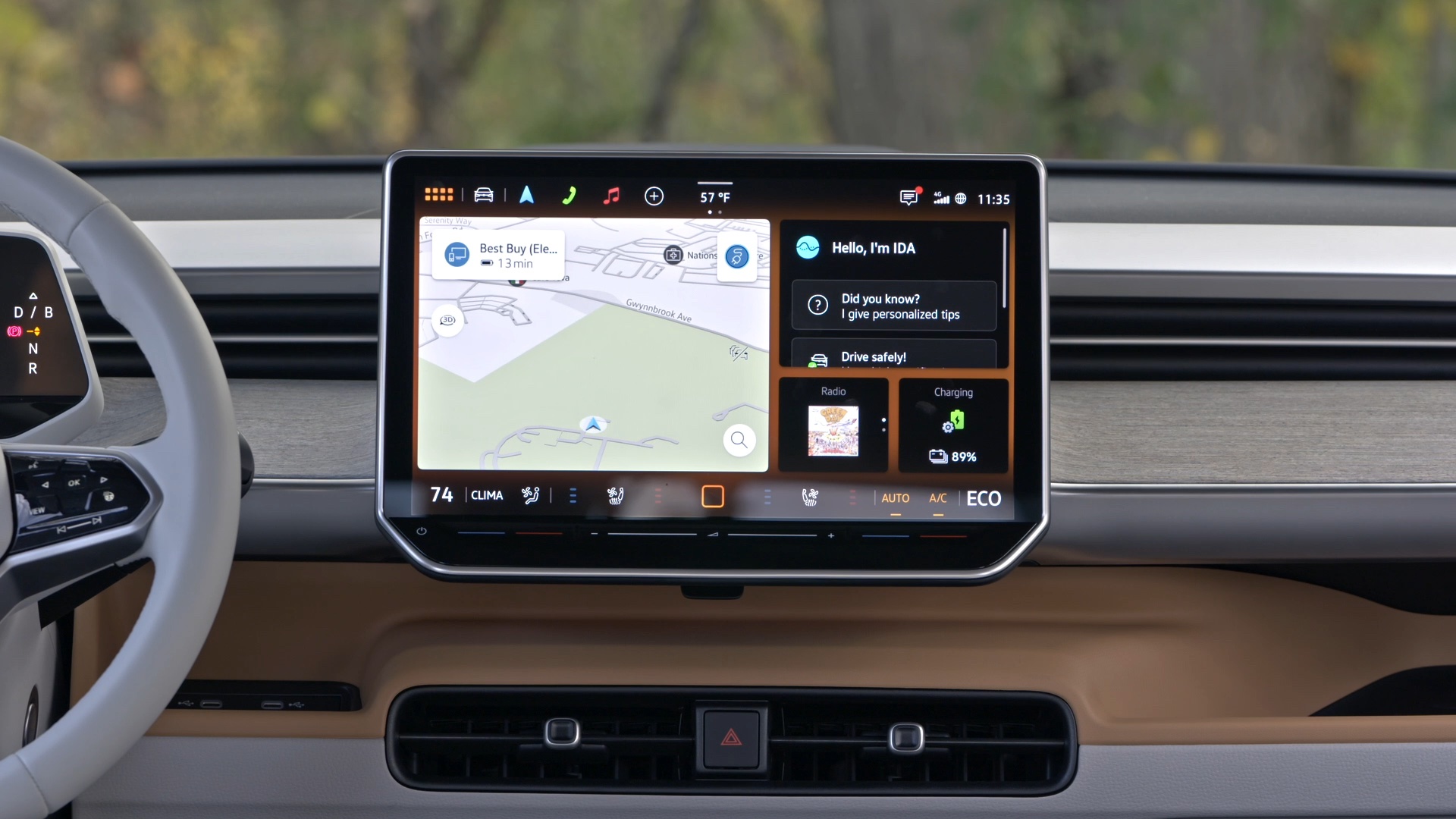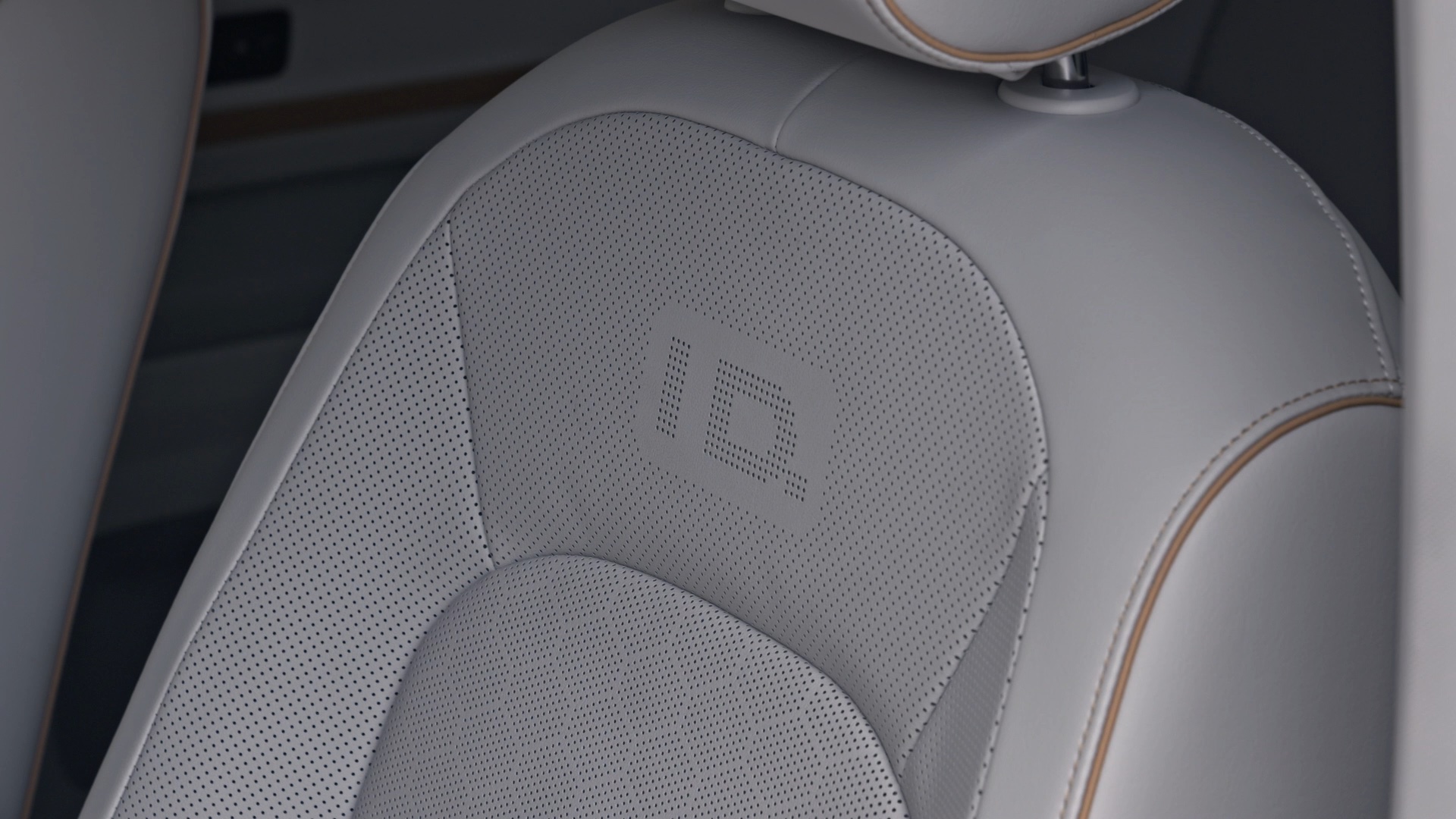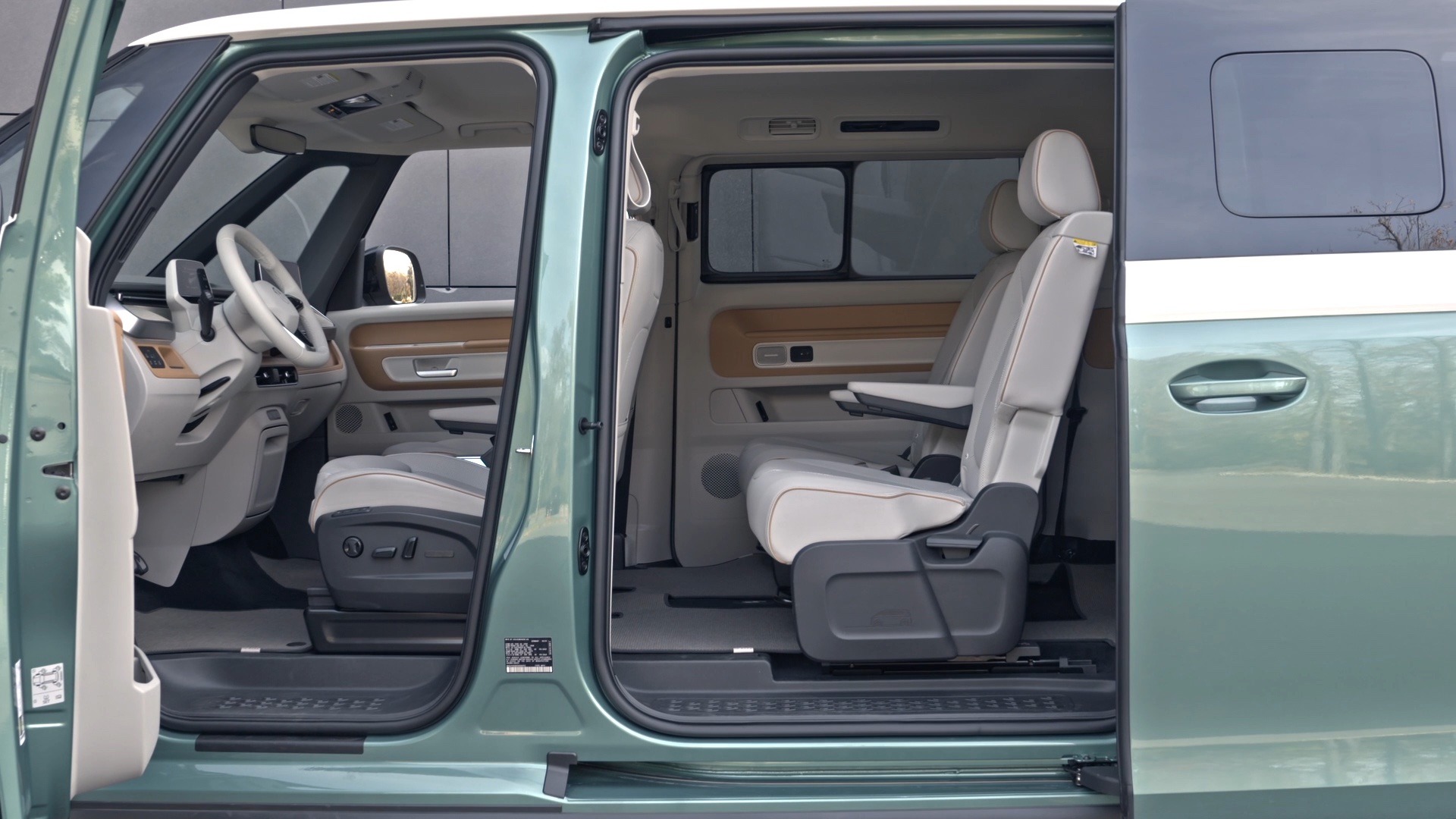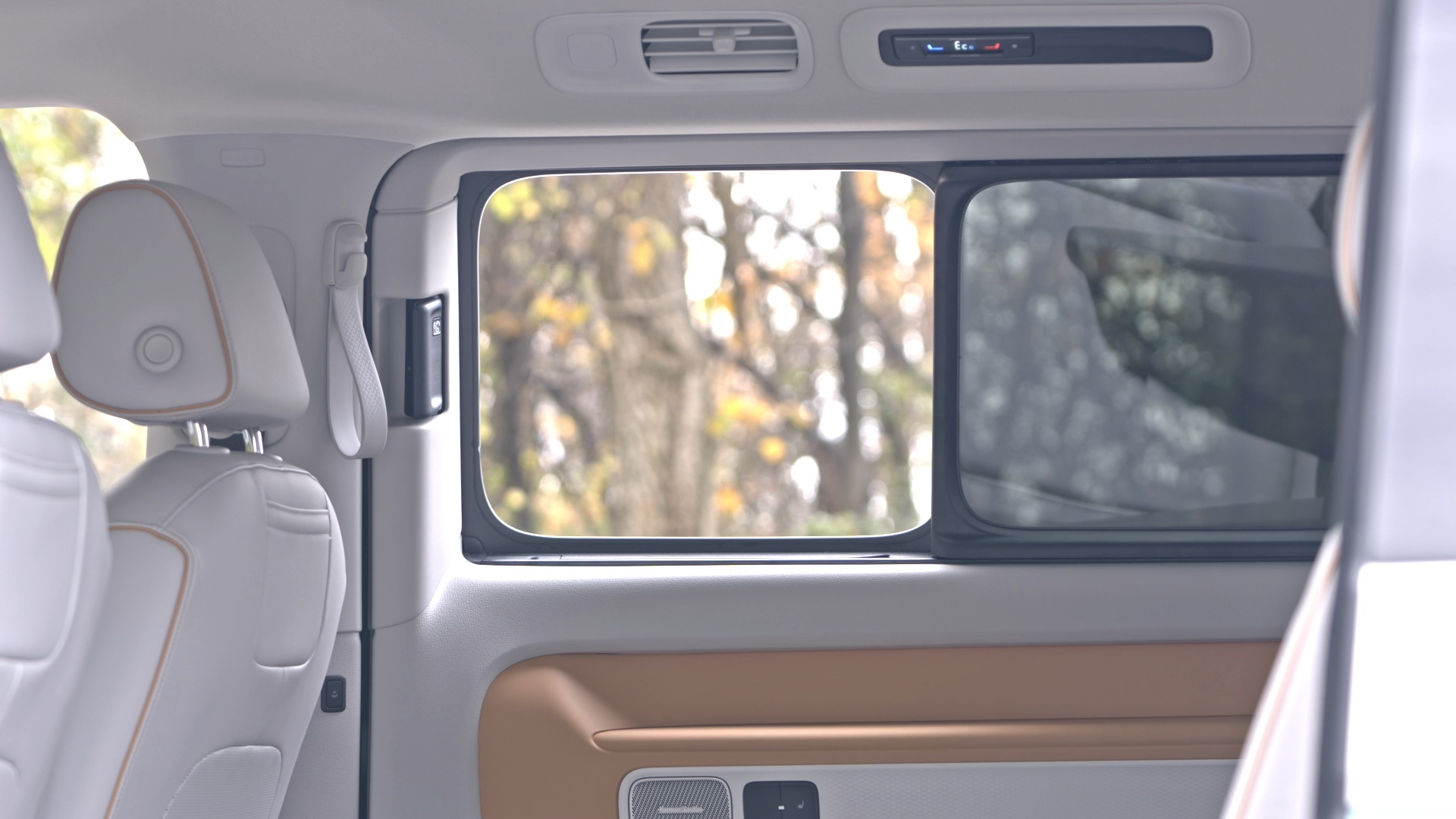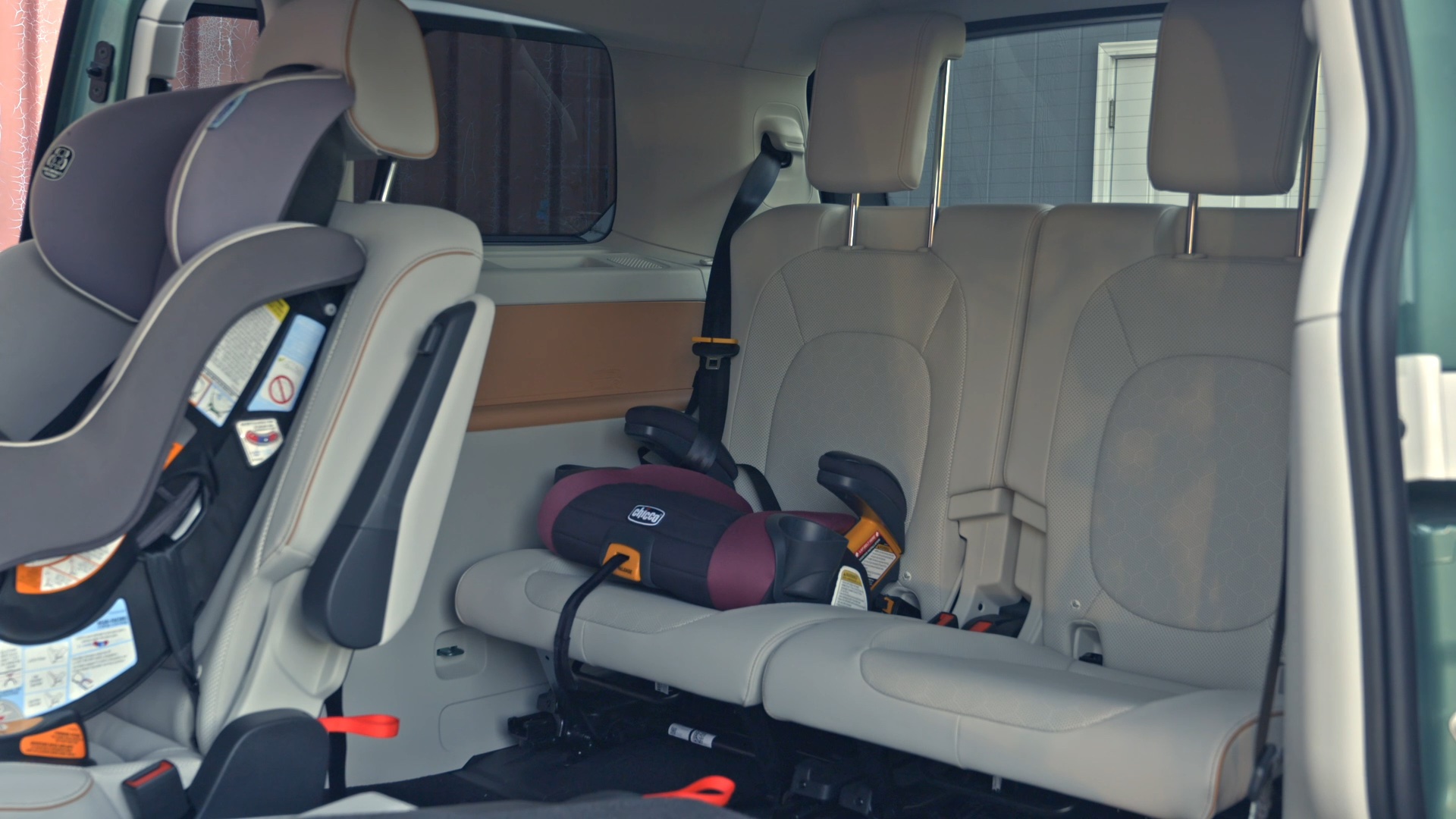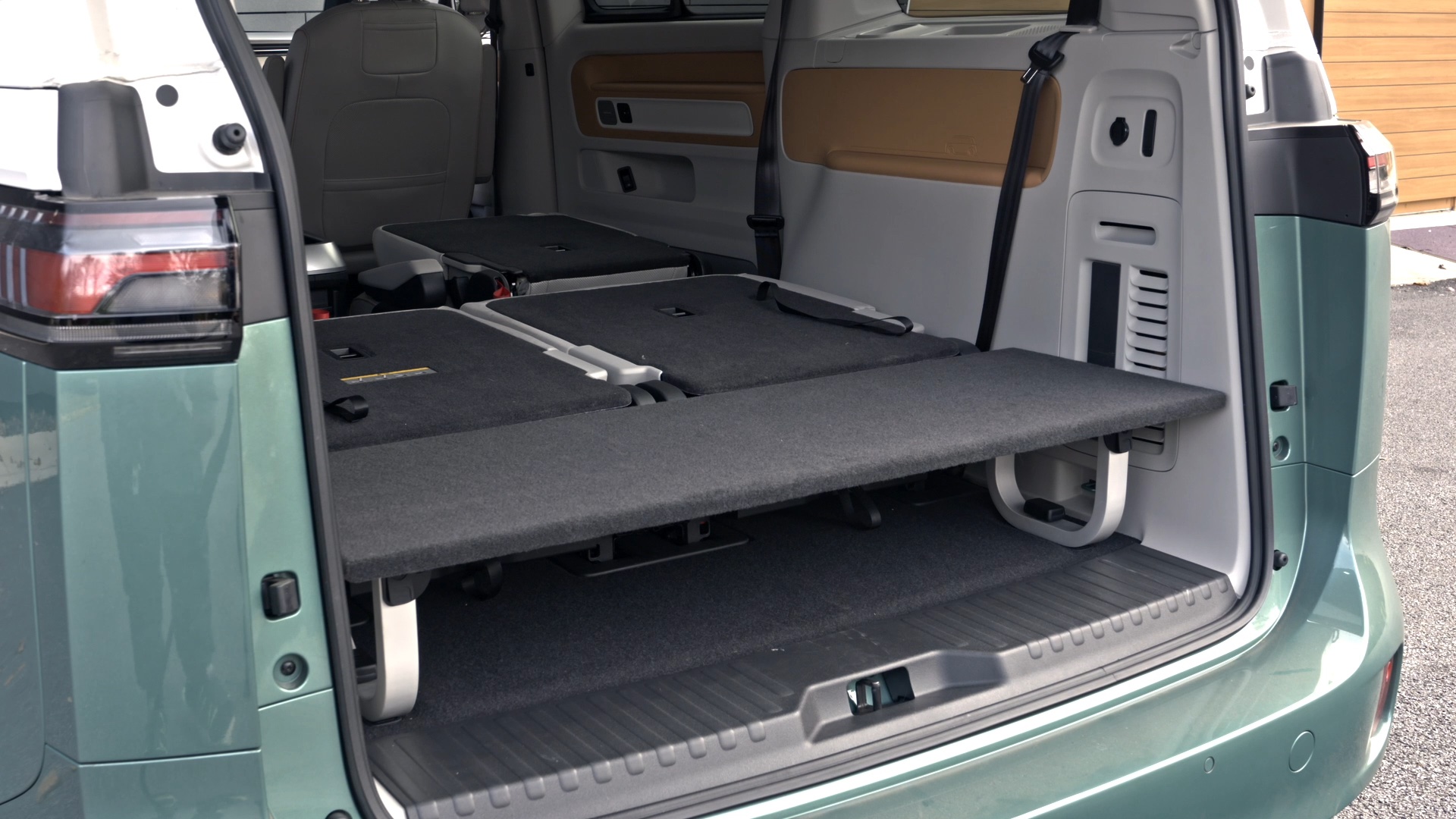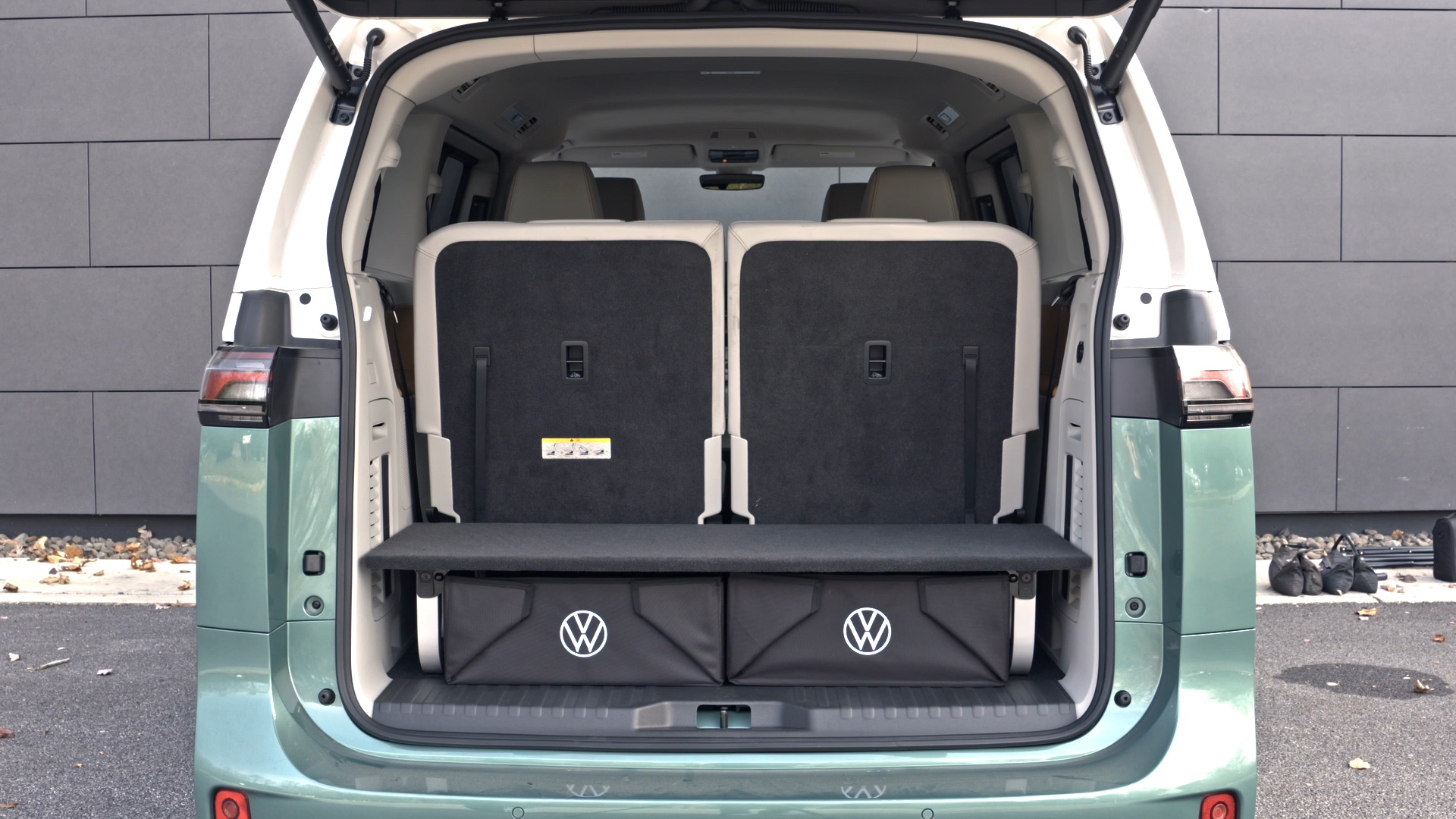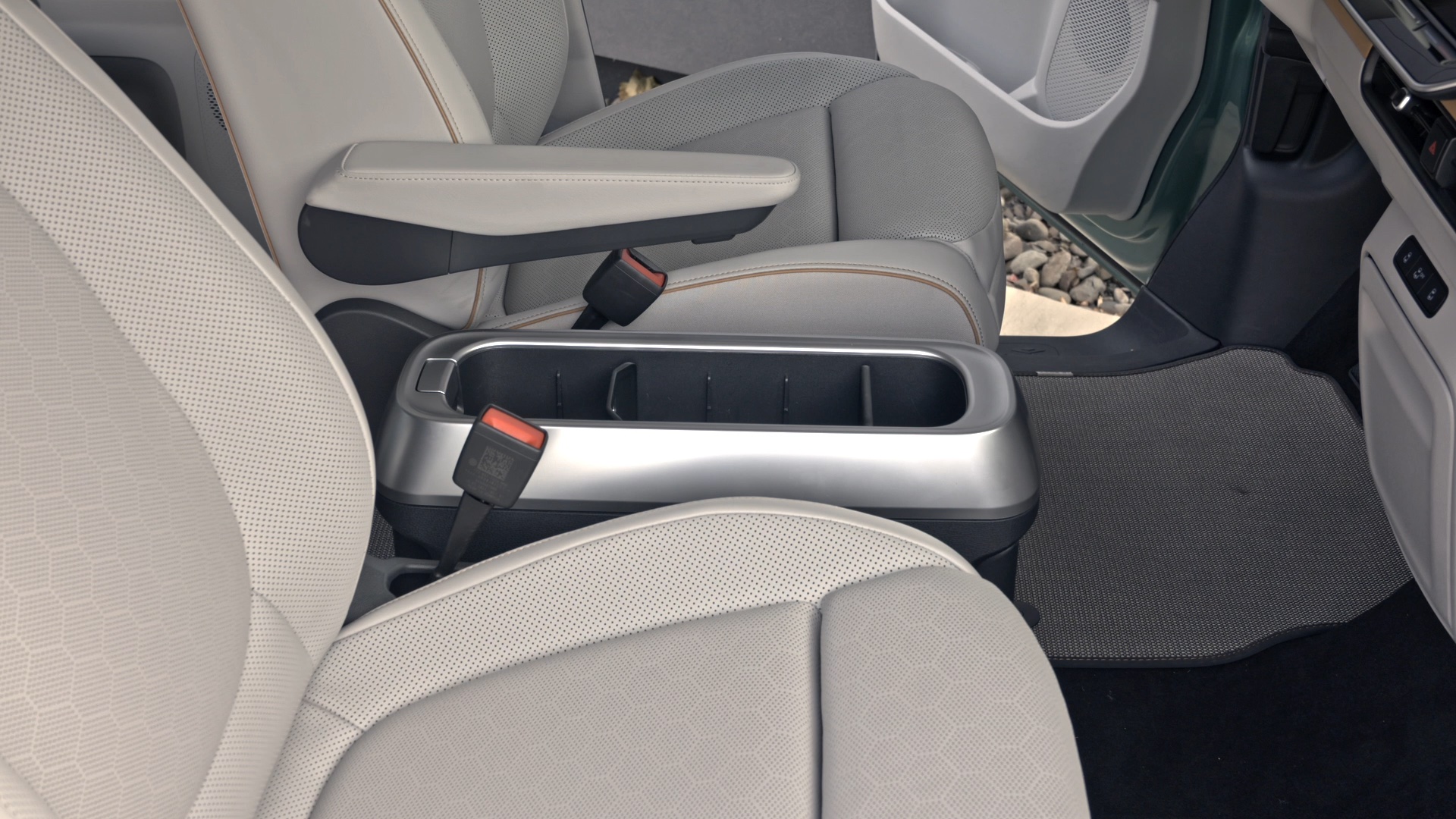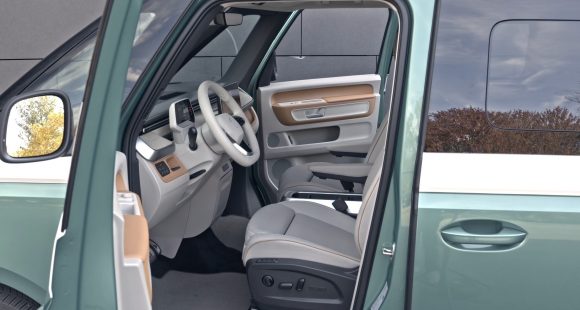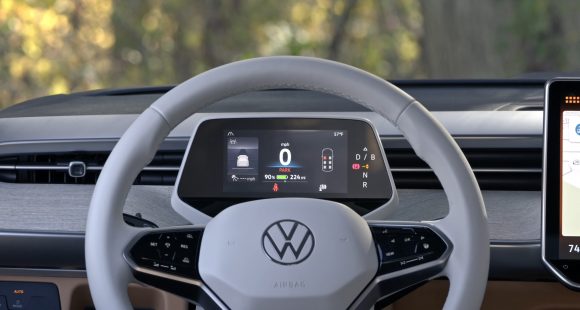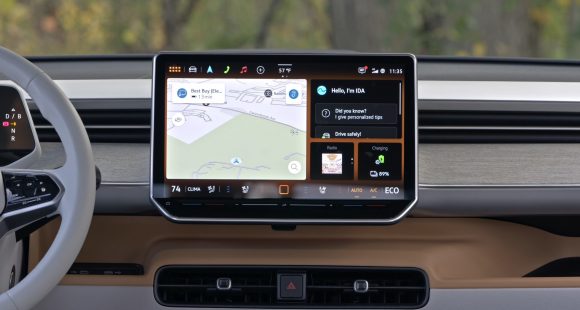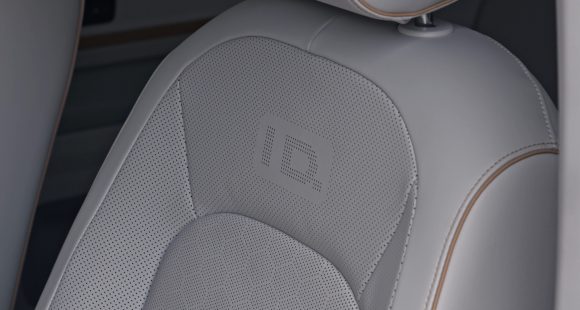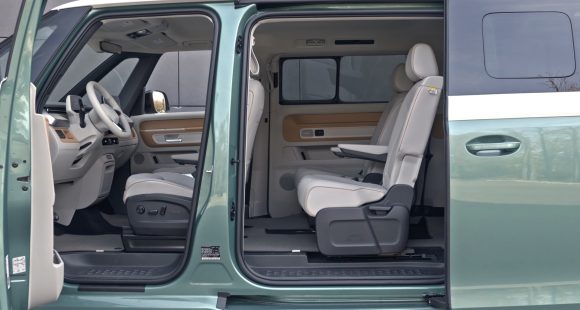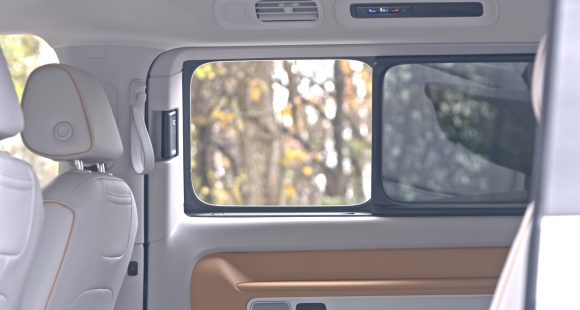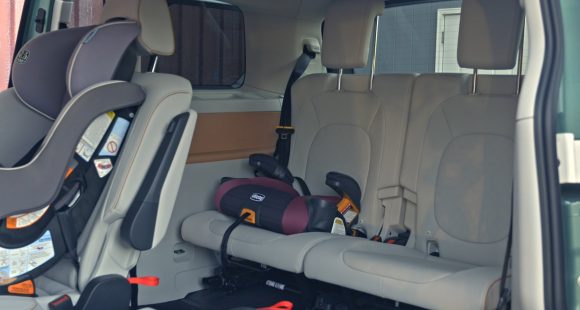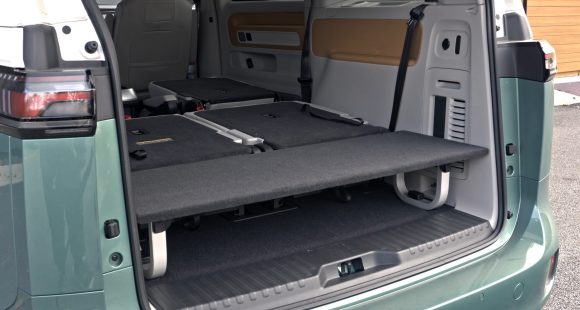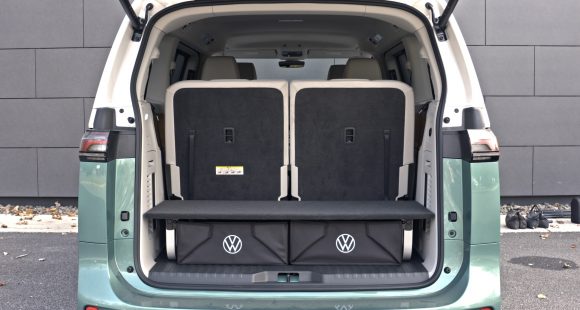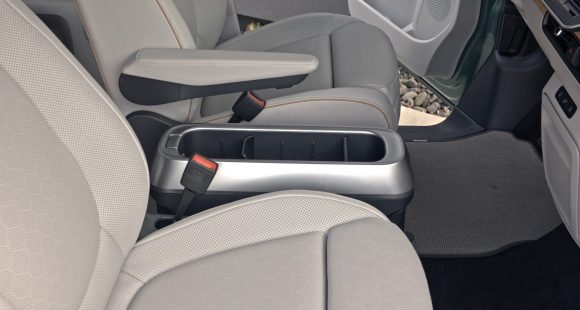2010 GMC Terrain
With sales of its surviving four brands doing well, General Motors appears on the road to recovery. A big reason is a steady stream of attractive new models. Case in point, the 2010 GMC Terrain. While sharing its mechanicals with the popular Chevrolet Equinox crossover utility, the Terrain shuns pure badge engineering, and dons the distinct, angled look of a more traditional SUV. Now, let’s see if it drives the same way.
While the 2010 GMC Terrain shares the Equinox’s compact-to-midsize Theta unitized chassis, it’s more “tough truck” shape ends up being about 2.5 inches shorter in overall length. So, to the eye, Terrain is stouter than the sleeker Equinox, and more along the lines of the venerable Jeep Cherokee.
The Terrain’s visual macho starts with projector-beam headlights, stacked to either side of a massive chrome GMC grille, which drops low into a deep, substantial-looking front fascia. The Terrain’s pronounced, squared-off fenders house wheels from 17 to 19 inches. Our tester split the difference, with six-spoke 18-inch alloys.
Standard roof rails proved useful, and fit the Terrain’s stance nicely. We also like the blacked-out D-pillars that give the impression of a wraparound rear greenhouse. Ditto the rear wiper that appears to float above a chrome bar connecting big, wide taillights. It shares no sheetmetal with the Equinox, but pop the Terrain’s hood, and things are happily familiar.
 Our all-wheel drive tester sported the same direct-injected Ecotec 2.4-liter four we applauded in the Equinox. Ratings are 182 horsepower and 172 pound-feet of torque. A 3.0-liter direct-injected V6 is optional with 264 horsepower and 222 pound-feet of torque, and when properly equipped, a trailer tow limit of 3,500 pounds.
Our all-wheel drive tester sported the same direct-injected Ecotec 2.4-liter four we applauded in the Equinox. Ratings are 182 horsepower and 172 pound-feet of torque. A 3.0-liter direct-injected V6 is optional with 264 horsepower and 222 pound-feet of torque, and when properly equipped, a trailer tow limit of 3,500 pounds.
In front or all-wheel drive, engines attached to a six-speed automatic with manual mode. Four-cylinders get an “Eco mode” which lowers shift points for better fuel economy.
This combo gives Terrain the same stellar fuel economy as Equinox. Our all-wheel drive four has Government Fuel Economy Ratings of 20 miles-per-gallon city and 29 highway. We managed an excellent 27.5 miles-per-gallon on regular gas. Our Terrain’s Energy Impact Score stands at a modest 14.9 barrels of oil consumed annually, and its Carbon Footprint of 8 tons of CO2 is likewise light-footed.
But, at the track, our Terrain loped from a standstill to 60 in 9.7 seconds. That’s about a second slower than the front-drive Equinox we tested last fall. Shifts came slow, even in manual mode. The quarter mile came in at 17.3 seconds at 83 miles-per-hour. Beyond times, however, the 2.4 felt plenty strong for highway passing, especially between five and seven thousand rpm.
The Terrain’s low power-to-weight ratio proved less of a hindrance through the slalom, where it felt much lighter than its almost two-ton curb weight. It delivered impressive car-style grip, sharp turn-ins, and only modest body roll, with none of the flabbiness of a traditional SUV.
Steering was slack on center, but tightened up nicely when we asked the Terrain to dance. In the high-speed lane change, the all-independent suspension and electronic control nannies kept the rear end reassuringly in check. Stomping the ABS disc brakes from 60 yielded a short average stopping distance of 122 feet. Brake feel was excellent: smooth and firm.
 All Terrain cabins come standard with flowing lines, soft-touch materials, and six airbags. They’re setup in a sporty, twin-cockpit theme that, except for the gauge pod, has a lot in common with Equinox.
All Terrain cabins come standard with flowing lines, soft-touch materials, and six airbags. They’re setup in a sporty, twin-cockpit theme that, except for the gauge pod, has a lot in common with Equinox.
Our well-optioned SLT included a sunroof, which shed light on the nicely drawn dash, and steering wheel audio controls that put channel surfing at our fingertips.
Bluetooth connectivity also fell easily to hand. Four auxiliary power outlets and a USB port are standard, as is Active Noise Cancellation. On 2.4 Terrains, it neutralizes engine boom using the audio system’s eight speakers. Also standard is a backup camera that shows up in the rear view mirror, or on the available navigation screen.
Our Terrain’s heated, leather trimmed front seats were plenty comfortable on long hauls. Equally comfy is the split-fold rear bench that, like Equinox, reclines and slides with eight inches of travel. Also like Equinox is Terrain’s optional programmable power liftgate. Besides full open, it can be set for a lower opening to avoid contact with a garage ceiling. Once open, owners find 31.6 cubic feet of cargo room seats up, and a small-for-its-class 63.9 cubic feet seats down.
Pricing, however, is very competitive given the Terrain’s high level of standard equipment. Base four-cylinder stickers range from $24,955 for the front drive SLE, to $29,945 for the all-wheel drive SLT. The V6 adds $1500 more.
For General Motors to prosper, they will need more efforts like the 2010 GMC Terrain. This gutsy, fuel-efficient, tough looking crossover is a family slam dunk, with build quality, interior, and drivability, on par with, if not better than, any rival utility across town, and across the oceans.
Specifications
- Engine: 2.4-Liter Four
- Horsepower: 182
- Torque: 172 Lb Feet
- 0-60 MPH: 9.7 Seconds
- 1/4 Mile: 17.3 Seconds @ 83 MPH
- 60-0 MPH: 122 Feet
- EPA: 20 MPG City/ 29 MPG Highway
- Mixed Loop: 27.5 MPG
- Energy Impact: 14.9 Barrels Oil/Yr
- CO2 Emissions: 8.0 Tons/Yr
2025 Volkswagen ID. Buzz
Volkswagen Brings Beetlemania Level Of Excitement To Minivan Segment
The duty of upholding Volkswagen’s heritage has most recently been delegated to small legacy car names like Golf and Jetta. But hold on! A much larger, totally modern take on VW’s classic microbus has just buzzed over the horizon— the all-electric ID. Buzz. It’s been at the top of our minds since we first saw the concept back in 2017. Well, it’s finally here, so let’s get our groove into drive!
This 2025 Volkswagen ID. Buzz has indeed created the most buzz around Volkswagen since the Beetle’s return to the U.S. in the late 1990s. We couldn’t drive it anywhere without drawing a crowd. No wonder, just about everyone has a VW Microbus story to tell, and seeing this reimagined version rolling down the street brings back all those memories.
VW really pulled it off as far as we’re concerned, as it looks great without appearing over the top. All the cues are here: Big VW logo front and center, lots of greenhouse including A-pillar windows and mini sliders for the second-row passengers, D-pillar air vents, and two-tone wheels. And while its appearance may be pure retro, its drivetrain is far from it, as the ID. Buzz is all-electric, and unlike the new Beetle, the Buzz does retain the original Microbus’ rear-drive architecture.
Powering those rear wheels is a 210-kW motor drawing juice from a 91-kWh battery for a range of 234 miles; 200-kW max charging will get you to 80% in about 26 minutes. Buyers can add another small 80-kW motor up front for 4motion all-wheel-drive and an increase of total output from 282 to 335 horsepower with a combined 512 lb-ft of torque. It uses the same battery, but range estimates drop just slightly to 231 miles. But while those numbers are modest, we also found them to be quite conservative, as we observed as many as 287 miles available in our all-wheel-drive tester’s gauge display and were on pace for 273 miles in our driving loop.
One throwback theme that may be a turnoff to some is that it’s quite a step up into the Buzz’s front seats, but there’s certainly a commanding view of the road once you climb in. Second row seating can be either a three-place bench or a pair of captain’s chairs, so there’s generous room for seven or six passengers. The captain’s chairs in our Pro S Plus offer good support and very easy access to the third row.
Lots of flexibility too with the option to simply fold the seats or remove them altogether.
With the sliding side doors and a wide opening rear hatch, there’s plenty of access for loading big sport utility amounts of cargo. Lots of flexibility too with the option to simply fold the seats or remove them altogether, and the ability to create a full-length flat floor with a rear cargo shelf that covers some handy removable storage bins. There’s 18.6 cubic-feet of space behind the third row, 75.5 behind the second, and a max of 145.5. That’s more than a Chevrolet Tahoe. For smaller items, there are lots of cubbies throughout the cabin, along with a standard Buzz Box that can be moved to multiple locations.
With a design that prioritizes retro form and modern function over aero efficiency, the 4motion equipped ID. Buzz earns a Fair efficiency rating, using 42-kWh of electricity per 100 miles, and we weren’t sure what to expect at our Mason Dixon test track.
What we found was great torque off the line and drama free launches to 60 in just 5.3 seconds. It was very stable at speed and power delivery stayed steady most of the way down the track until we reached about 90 mph, when it began to taper off just before we finished the quarter-mile in 14.0 seconds flat at 97 mph.
With 1,200-lbs. of battery weight nestled in its 127.5-inch wheelbase, the Buzz felt planted to the pavement through our handling course. There was quite a bit of body roll to deal with, but surprisingly little understeer. In panic braking runs, pedal response was inconsistent, feeling soft at times, pushing back hard at others; but through it all, results were quite good, stopping from 60 in an average of just 108 feet.
Three interior themes are available, this Dune is the brightest, featuring coastal inspired wood optic dash décor, “gray and clay” leatherette surfaces, and a high-mounted central 12.9-inch touchscreen. Pricing starts with a rear-wheel-drive Pro S at $61,545; this Pro S Plus begins at $65,045, add another $4,500 for 4motion, which brings a few extra features along with all-wheel drive.
Retro design with old-school VW charm, modern EV drivetrain, big SUV capacity merged with minivan flexibility; it all comes together in this 2025 Volkswagen ID. Buzz. It’s easily one of the coolest rides of the year and one that will likely keep Volkswagen dealers buzzing for years to come, and that’s something no other people and things mover can say.
Specifications
As Tested
- Motor Setup: Dual-Motor AWD
- Battery Size: 91-kWh
- Horsepower: 335
- Torque: 512 lb-ft
- EPA Range: 231 miles
- 0-60 mph: 5.3 seconds
- 1/4 Mile: 14.0 seconds at 97 mph
- Braking, 60-0: 108 feet
- MW Test Loop: ~ 273 miles







